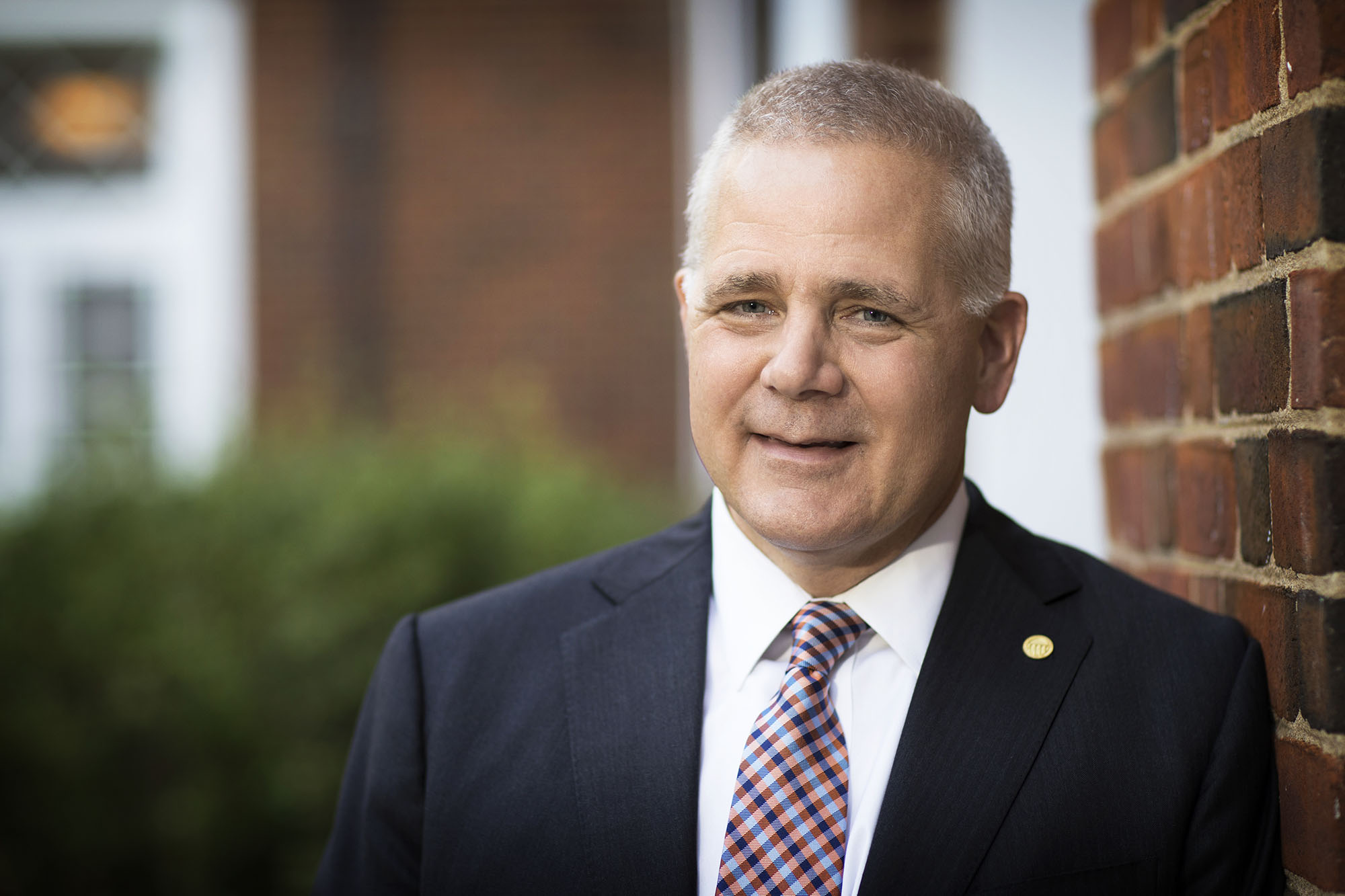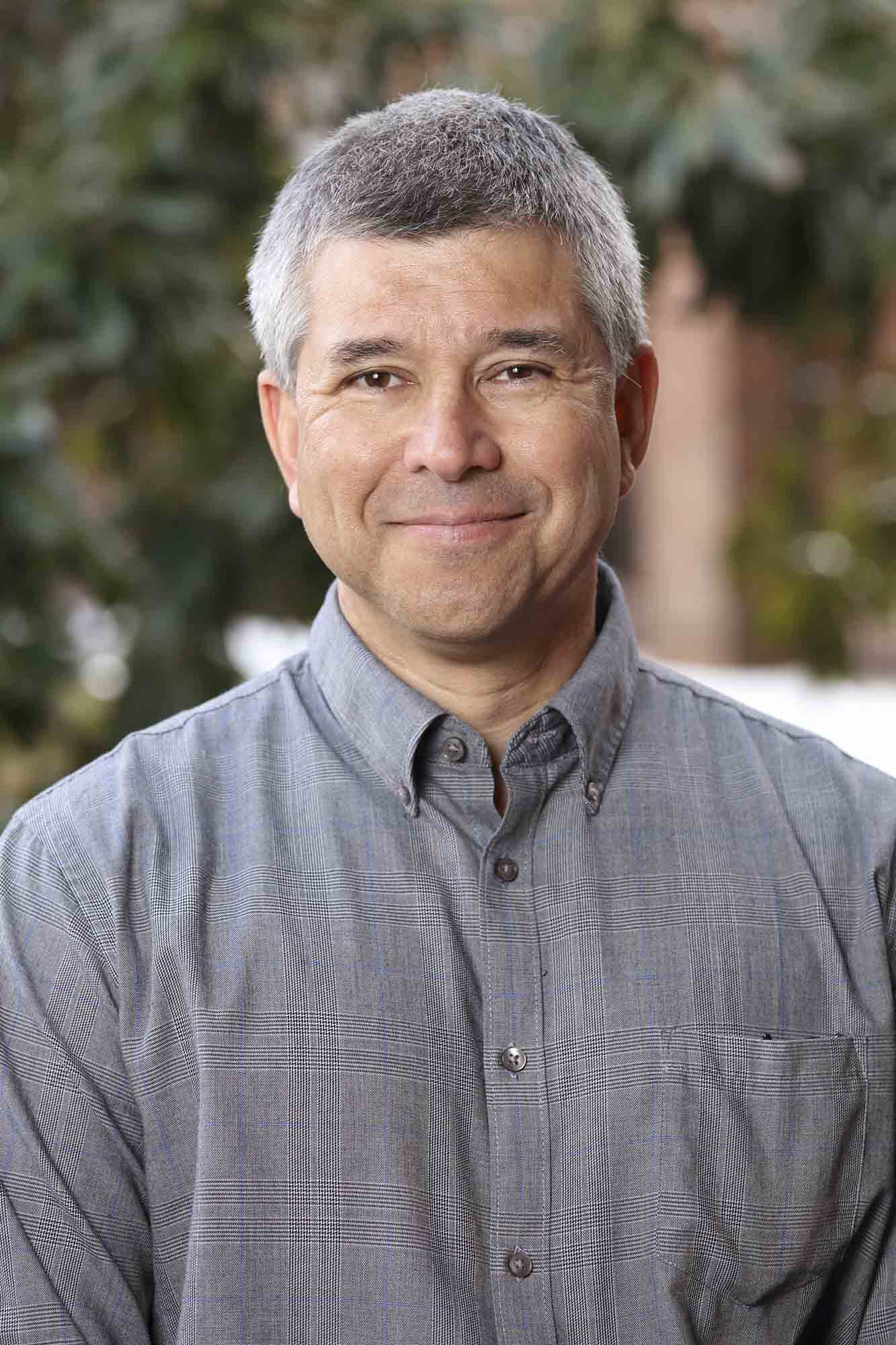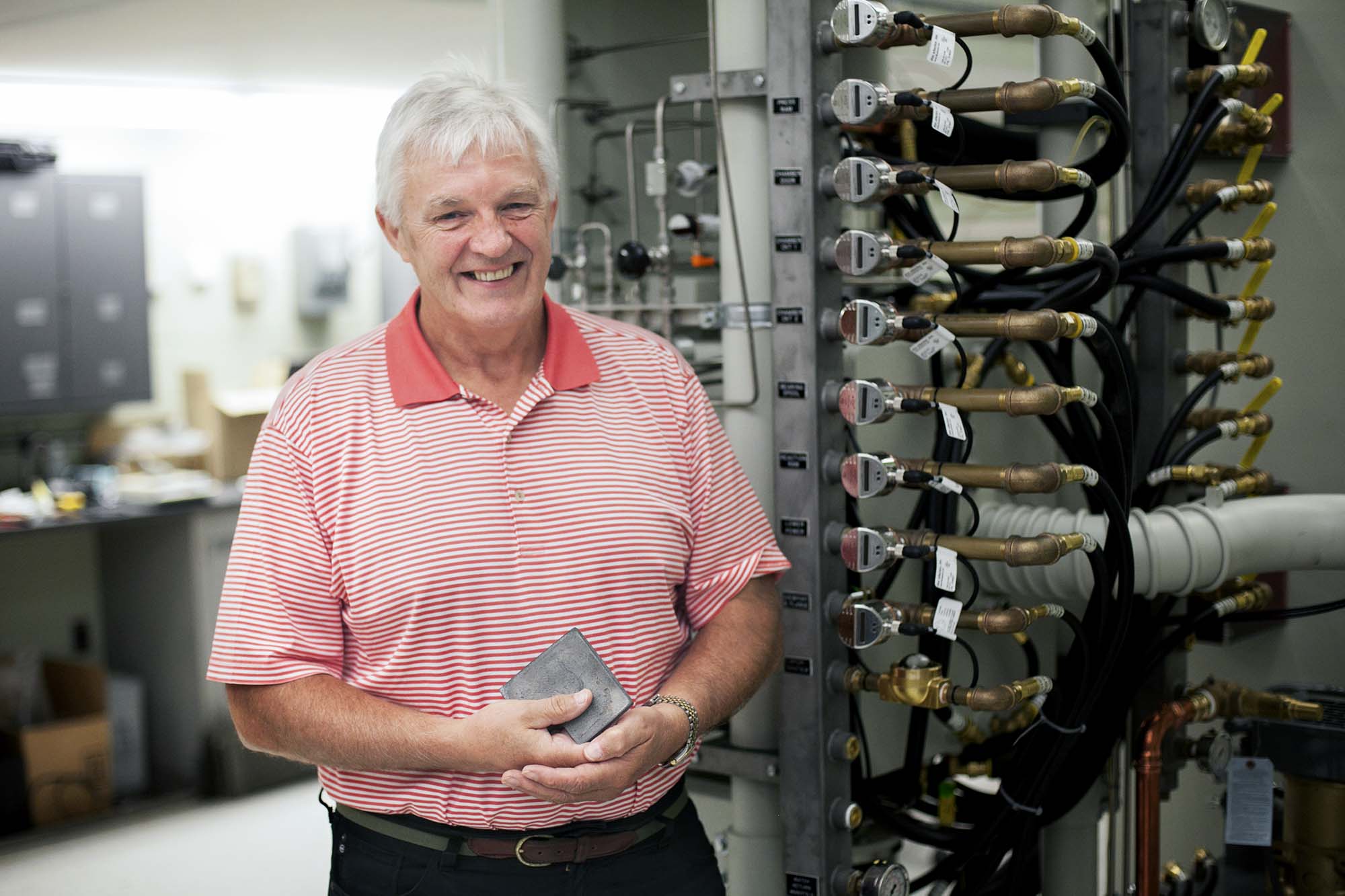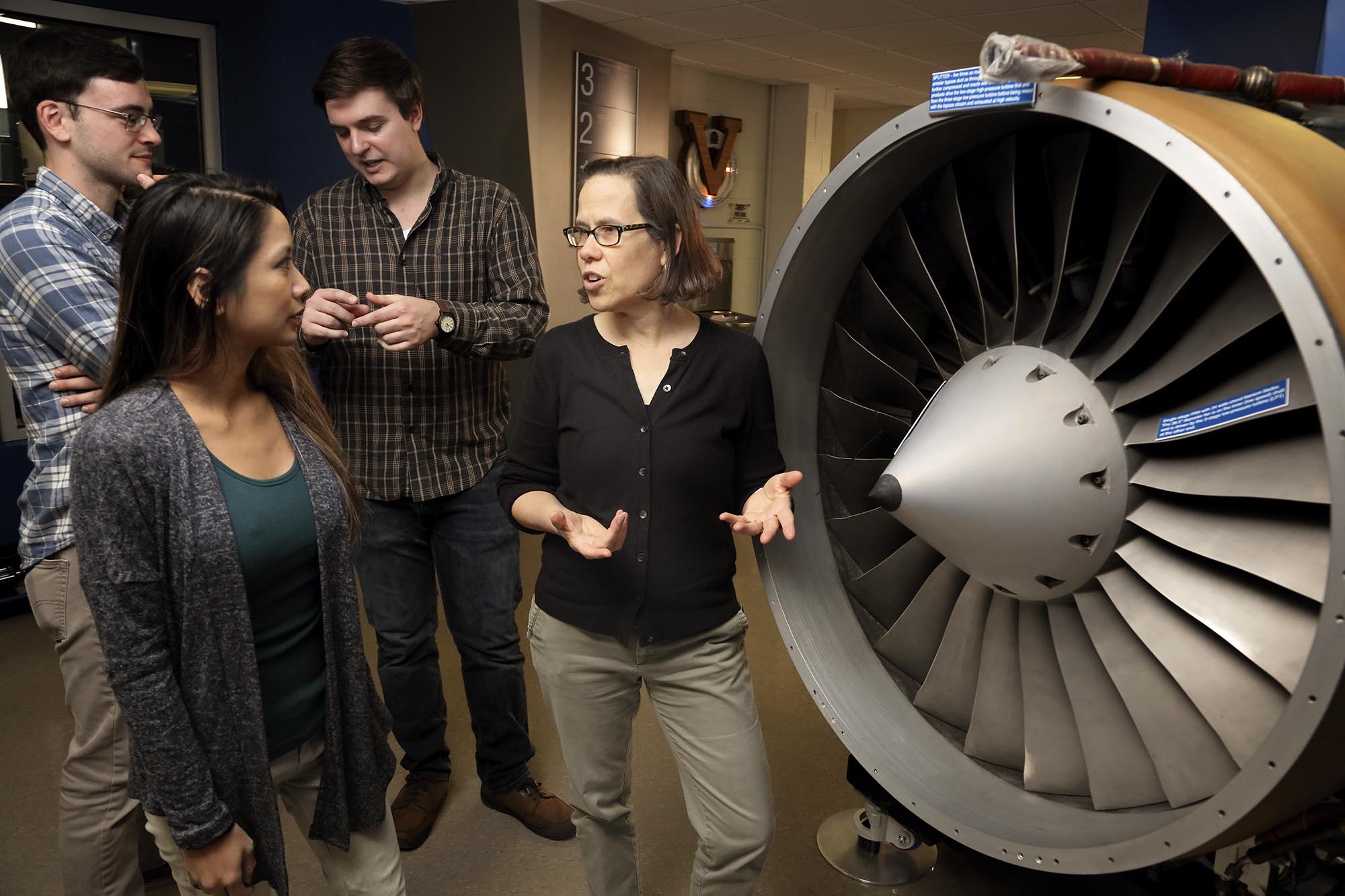What do beach sand, a hip implant and a non-stick frying pan have in common? They each have a unique set of properties and usefulness thanks to their material composition and structure.
Undergraduates in the University of Virginia School of Engineering soon will have an opportunity to learn about the hidden structures and properties of metals, polymers, ceramics and electronic materials as they work toward Bachelor of Science degrees in materials science and engineering.
The State Council of Higher Education for Virginia recently approved the University’s proposal to establish the bachelor’s program. The program will begin enrolling the first students in spring 2021. It follows guidelines established by the Accreditation Board for Engineering and Technology Inc., paving the way for degree earners to obtain a Professional Engineer license.
“Materials science engineers contribute to just about every object people use to make life better and more efficient,” UVA Engineering Dean Craig H. Benson said. “We are proud to offer undergraduates the opportunity to learn from faculty who are leaders in the field. Undergraduates also will benefit from working in classrooms and labs with our outstanding materials science and engineering graduate students.”

Craig H. Benson is the dean of UVA Engineering. (Photo by Dan Addison, University Communications)
The approval continues the evolution of UVA Engineering’s undergraduate materials science and engineering curriculum, building on the minor introduced in 1995 and a concentration within the engineering science major introduced in 2008. Professor James Fitz-Gerald has been appointed director of undergraduate programs in the Department of Materials Science and Engineering and will continue to serve as director of the engineering science program.
The bachelor’s degree program will enable students to answer fundamental questions about materials – not only what they are, but also how they behave in real-world environments and why. In the field, this is known as the structure-processing-property relationship of materials.
“We take something as familiar as concrete and explain how it behaves, all the way down to its atoms,” Jerrold Floro, professor of materials science and engineering, said.
Past decades’ advances in materials science and engineering have contributed significantly to economic prosperity. The steel used to build cities, the aluminum used to achieve powered flight and the silicon that drives computers were all created in materials science labs.
Students enrolled in the bachelor’s program will take the next leap in sustainable economic progress. They will learn how to balance productivity goals with the cultural, social and environmental effects of new materials.
“A good example is the enormous impact that nanomaterials and devices have on the economy, our health care and our national security,” Haydn Wadley, University Professor and Edgar Starke Professor of Materials Science and Engineering, said.

Jerrold Floro is a professor of materials science and engineering. (Photo by Tom Cogill)
From new catalysts that reduce the carbon emissions of chemical engineering plants, to sensors that can rapidly and reliably detect viruses, to the newest nanoelectronics devices, nanomaterials science is changing the world. Wadley helped complete a congressionally mandated study of the National Nanotechnology Initiative, conducted by the national academies of Sciences, Engineering and Medicine.
“Looking to the future, we will use nanotechnology to make the devices that enable quantum computing, sensing and communications,” Wadley said. “Our study revealed an urgent need for graduates with the skills and knowledge to advance this technology.”
“The bachelor’s degree makes us more attractive to students who are passionate about serving society by innovating materials,” John Scully, Charles Henderson Chaired Professor of Materials Science and Engineering and department chair, said. He foresees students enrolled in materials science and engineering joining and leading international efforts to address current and future crises, from pandemics to climate change.
“Materials science focuses on the inventive aspects of engineering,” Ji Ma, assistant professor of materials science and engineering, said. Students who are interested in aerospace or biomaterials in health care, for example, will find a home in the materials science and engineering program.
“Using their knowledge and skills in materials characterization and computational methods, our students will develop creative solutions in the hard, physical sciences,” Ma said.
“Materials science is the perfect fit for me because it combines a variety of different disciplines, especially chemistry and physics, and has ever-expanding applications,” Crestienne DeChaine, a third-year mechanical engineering student advised by professor Lin Ma, said. DeChaine plans to double major and then pursue a Ph.D. in materials science and engineering. “Being enrolled in both majors gives me a complex and nuanced understanding of materials properties that will prepare me well for the future.”
DeChaine studies super alloys for high-temperature applications in the aerospace industry as a member of the Burns Research Group in materials science and engineering. “It’s very rewarding to do research that will help make future airplane engines safer and more reliable,” DeChaine said.
DeChaine said she has always been drawn toward math and science, but it was not until her junior year of high school that she firmly decided to be an engineer after participating in a Virginia Aerospace Science and Technology summer program, where she planned a mock Mars mission.

Haydn Wadley is a University Professor and the Edgar Starke Professor of Materials Science and Engineering. (Contributed photo)
She credits her UVA summer orientation for pointing her toward a course called “Introduction to Materials Science.” “Without this pivotal suggestion, I would not have been exposed to this unique field,” DeChaine said.
The new major will increase the visibility and value of this course for incoming students, who also benefit from faculty members’ ground-up incorporation of new technology and new ways of teaching. Professors Liheng Cai and David Green, for example, use cooking and food to illustrate fundamental concepts in soft matter science, an emerging branch of modern materials science and engineering.
Rachel McNamara, a third-year computer science major advised by assistant professor Ahmed Ibrahim, agreed with DeChaine on the value of the introductory materials science course, which she completed during her second semester. Students enrolled in this course discover which materials they need to manage trade-offs in the look and feel, function, performance or affordability of objects, from everyday things like clothes hangers to specialized items such as a ravioli cutter or French horn mouthpiece.
“It was my favorite class by far that semester and inspired me to continue in that course of study and pursue research opportunities. What amazed me about materials science was how it walked the line between science and engineering so closely,” McNamara said.
McNamara, who plans to double major in materials science and engineering, works with graduate and undergraduate students in the Advanced High Temperature Materials Lab led by Elizabeth J. Opila, professor of materials science and engineering. McNamara considers undergraduate research opportunities one of the best parts of the Department of Materials Science and Engineering. Guided by Opila and graduate student Rachel Guariello, McNamara is working on a machine learning project to analyze the durability and corrosion resistance of coatings applied to jet engine parts.

By their fourth year, students will have the potential to present their research at professional and technical conferences as part of a team.
“Getting in the lab, having lab tours and learning cutting-edge research techniques makes me feel prepared to pursue a secondary degree,” McNamara said.
As an undergraduate teaching assistant in computer science, she discovered a passion for helping others learn difficult and complex topics and is exploring the idea of becoming a professor in the future. “Earning a B.S. in materials science will definitely help me to work toward this goal, as I will be ready to do graduate research and better understand the complexities of the world I live in,” she said.
The bachelor’s program enriches students’ learning experience in partnership with the department’s 27 faculty members. “The reason we’re at a university is to interact with students,” Opila said. “Inspiring students is a huge part of our mission.”
Opila found her passion for materials science as an undergraduate at the University of Illinois Urbana-Champaign. Opila recalled her introduction to ceramics, when she and other students were presented with a literal grab bag of items to study. She learned that by changing the composition of a material, she could control how strong, heavy and brittle it would be. Opila seeks to recreate the experience for students enrolled in the “Materials Science Investigations” course, in which they learn techniques to characterize materials. Each student selects and works with a single object throughout the course.
“Materials scientists make things the way they need to be,” Opila said.

Elizabeth J. Opila, professor of materials science and engineering and mechanical and aerospace engineering, explains experiments and materials analysis underway at the Rolls-Royce University Technology Center. (Contributed photo)
Faculty members have expanded the curriculum to prepare students to join several growing industrial fields that need materials scientists and engineers, such as additive manufacturing. Students enrolled in the “Additive Manufacturing of Metals” course, for example, learn how to identify and predict the causal and correlative relationships among material processing, a material’s structure and its properties before and after 3-D printing.
Many of the department’s governmental and industrial research partners and sponsors not only hire its Ph.D. students, but inquire about undergraduate students for internships and permanent hires.
“Historically, students who have been pursuing the Engineering Science degree with a focus on materials have taken advantage of those opportunities,” Robert G. Kelly, AT&T Professor of Engineering and professor of materials science and engineering, said. “The new Bachelor of Science degree will help address that demand.”
“The curriculum at UVA allows these students to do a deep dive in the field of materials science and engineering while also providing them with interdisciplinary skills that so many of our employers look for in UVA engineering students. Graduates gain soft skills including teamwork, critical thinking and problem-solving, global understanding, technology innovation, public communication and ethics,” Julia Lapan, director of engineering career development, said.
The NACE International salary outlook for entry-level materials science engineers in 2020 is $69,000, which is competitive with many of the majors in UVA Engineering and slightly higher than the national mean starting salary of $67,000 for engineering fields outside of computer science. Students can take advantage of the companies that recruit at UVA such as BWX Technologies and Framatome, Huntington Ingalls Industries (Newport News Shipbuilding), Rolls-Royce, GE Aviation, Northrop Grumman, the U.S. Naval Research Laboratory and IBM. The department’s alumni network has a global reach in industry consulting, entrepreneurship and advanced manufacturing as well as academia.
“We seek to build a diverse and equitable community of students from all backgrounds and to provide a home for one and all,” Scully said. “The materials discipline itself embraces diversity and requires it in order to succeed. This tenet is essential to innovation in our modern materials world. We are excited to work with our new majors and see them flourish in their careers as future role models and technological leaders.”
Media Contact
Article Information
August 11, 2020
/content/new-engineering-degree-program-attracts-students-purpose-and-pragmatism

